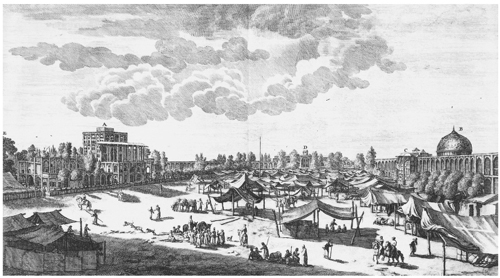Coffee (qahvah, in Arabic and Persian, kahve in Turkish) was a major agricultural product of Yemen and Arabia, which found new markets after their conquest by the Ottomans in the early 16th century. Through contact and trade with its eastern neighbours, coffee was exported from Ottoman lands to modern Iran (Persia), becoming well established there by the end of the century.

By the end of the 16th century, coffeehouses were a vital aspect of the Safavid dynasty’s capital Isfahan in modern Iran. The major coffeehouses of Isfahan were situated in its main square, Maydan-e Naqsh-e Jahan, at the entrance to the city’s famous bazaar.
Back to Queen Anne Silver Coffee Pot

